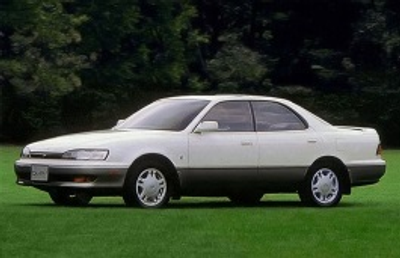The Toyota Camry V30 (Facelift 1992)
Introduction
The Toyota Camry V30, also known as the Facelift 1992 model, is a significant generation in the Camry lineup. Introduced as a mid-size sedan, it was designed to offer comfort, reliability, and performance to its owners. With its sleek exterior, spacious interior, and advanced features, the Camry V30 quickly gained popularity among car enthusiasts and everyday drivers alike.
Design and Features
The Camry V30 featured a redesigned exterior that set it apart from its predecessors. It boasted a more aerodynamic look, with smoothed edges and improved body lines. The front fascia was revamped, incorporating a new grille design and stylish headlights. At the back, the taillights were reshaped, giving the car a more modern and sophisticated appearance. Overall, the Camry V30 had a sleek profile that radiated elegance and class.
Inside the cabin, the Camry V30 provided a comfortable and spacious environment. The seats were ergonomically designed, ensuring optimal support during long drives. The dashboard had a user-friendly layout, with intuitive controls and gauges. The facelifted model also introduced features such as power windows, central locking, and a sophisticated sound system, further enhancing the driving experience.
Performance and Engine Options
The Camry V30 offered various engine options to suit different driving preferences. One of the most popular choices was the 3VZ-FE V6 engine, which delivered a balance of power and fuel efficiency. With its 3.0-liter displacement, it produced a respectable horsepower and torque, making it suitable for both city driving and highway cruising. Other engine options included the 2.2-liter 5S-FE four-cylinder engine and the 2.5-liter 2VZ-FE V6 engine, providing a range of power options for consumers.
In terms of performance, the Camry V30 offered a smooth and comfortable ride. Its suspension system was tuned to absorb bumps and road imperfections, ensuring a refined driving experience. The precise steering and responsive brakes added to the overall driving dynamics of the car. Whether on daily commutes or long trips, the Camry V30 offered a competent and enjoyable driving performance.
Safety and Reliability
Safety was a priority in the Camry V30, with Toyota implementing various features to protect occupants. The facelifted model introduced improved structural rigidity, enhancing crash safety. It also featured dual airbags and seatbelt pre-tensioners, adding an extra layer of protection for the driver and passengers. Anti-lock brakes (ABS) were standard, providing enhanced control during emergency braking situations. With its reputation for reliability, the Camry V30 was a top choice for those seeking a safe and dependable vehicle.
Legacy and Impact
The Camry V30 left a lasting impact on the automotive industry and solidified the Camry nameplate as one of Toyota's most successful models. Its combination of style, comfort, and reliability made it a top choice for consumers around the world. The success of the V30 facelift paved the way for future generations of the Camry, ensuring its place as one of the bestselling sedans in the market.
Conclusion
The Toyota Camry V30 (Facelift 1992) was a benchmark in the mid-size sedan segment. Its sleek design, advanced features, and performance capabilities made it a standout option for car buyers. With a focus on safety, reliability, and comfort, it provided a well-rounded driving experience. The Camry V30's legacy lives on, as it continues to uphold Toyota's commitment to excellence and innovation in the automotive industry.

